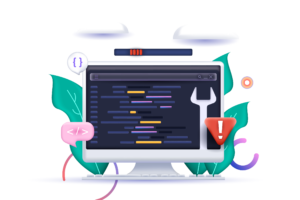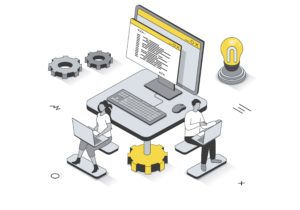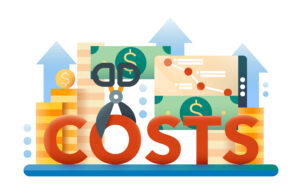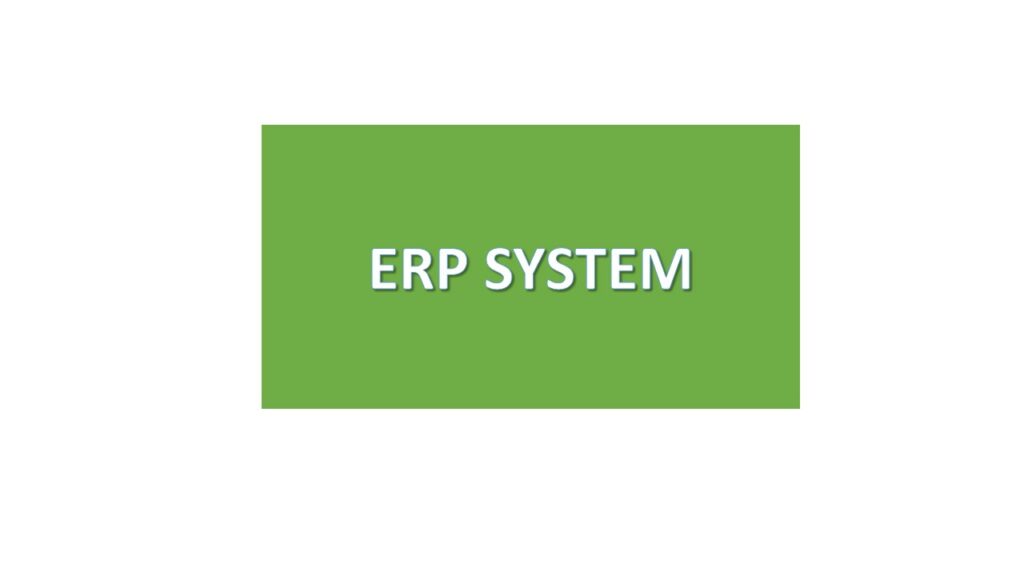The larger the company, the more business management tools are necessary to coordinate all processes. In 2021, over 50% of businesses developing an ERP system could easily manage their accounting, logistics, inventory, and staff.
On the other hand, those companies that hadn’t used ERP systems yet faced process difficulties and loss of money.
ERP solutions allow businesses to tackle their work processes better and thus save time and money.
1. What is an ERP System?
Enterprise resource planning ( ERP) software is a system that allows a company to standardise and simplify business processes in different departments.
It can also automate operations within the company and securely store and transmit information data to improve planning and decision making.
2. ERP Market Overview
For the last few years, an enterprise resource planning system has lost its exclusive domain for multinational corporations. Almost all modern companies of any size need an effective method for their management and product and project monitoring.
From 2022 to 2024, the global ERP software market is predicted to reach $97.15 billion with a compound annual growth rate of almost 0.8%.
Sloboda Studio created a year-over-year ERP system comparison to analyse ERP market growths and ERP system behaviour on the market.
3. Why choose custom ERP system development?
Off-the-shelf software buying and customisation will always seem cost-effective and time-saving as a result of less up-front fees as well as saving them time taken in the development process. Despite these advantages, quality matters, and building an ERP system from scratch is more likely to meet the systems’ requirements and functionalities.
4. How to approach the custom ERP development process?
Custom systems are more advantageous in delivering the proper needs of business operations, but this is usually in addition to an organised and step by the step development process. Custom ERP software development is a procedural process that includes:
ERP system development is an iterative process that always goes on as enterprises constantly need new modules and features.
4.1 Defining the project’s goals

This is the vision of the ERP development process. The client usually describes it to the developer; they explain what the system should deliver at the end of the development process. Eventually, the client and the IT experts should agree on the end product’s functionality and features.
4.2 Developing a Blueprint and Wireframing

Like in most operations, a blueprint acts as the basis of the whole process. Therefore, it should be well detailed. The custom system blueprint contains complete information about the development process, timeframe, and resources. It is a document created by every individual involved with the target system. This includes the system developers (whether in-house or outsourced), organisation managers, IT leaders, and the end-user end-user of the software. They are all essential in the creation of the master plan.
Wireframing involves stating the components involved in the custom ERP development process, sales, HR, accounts, procurement, etc. This creates the foundation for sales, HR, reports, procurement, business operations, and the data integrated with the system.
The most compared only implemented modules: Supply Chain Management, Resource Planning, HR Module, Financial Management, and CRM.
When you start to think of how to build an ERP system from scratch, it is essential to choose the type of custom solution. Each choice has some advantages and disadvantages. Let’s make a list of the available options:
- Client/Server ERP will work locally on the user’s computers, and the database will be stored on your networking hardware.
- Web-based ERP solutions will be running on the external we, b server and, therefore, can be accessed from a device in a simple web browser.
4.3 Technical part

This is the part where developers commence their work. It involves deciding on the database, backend, frontend and the whole aspectual part of how to develop web-based ERP software.
The stack of technologies such as framework and database is the foundation your custom system will be built on. You choose the platforms and framework and are heavily influential in the blueprinting and wireframing stage. It is a two-edged sword; for example, you pick the framework depending on your goals for the application, what level of security you require, etc. Caused by your choice of framework, you will have it running locally on the user’s machine or accessed with the browser. It is all about compromise and prioritisation. If cross-platform compatibility matters to you most of all, you have to go with Java; if the security comes first, you are most likely to choose .NET as your primary framework.
4.4 Where the system is to be hosted
A customised system can be hosted on your local servers or the cloud. Where to host the design is usually based on enterprise finances and policies. Nevertheless, the cloud is a more advantageous host for the following reasons:
- It does not require extra staff to work on the systems as needed in the maintenance of your design local server hardware
- Cloud provided better and guaranteed data security the data.
- It is more afford other equipment.
- It is flexible for a company whose users may want growable t,o small businesses as it requires less additional hardware, servers, and in time as the cloud can be easily scaled.
All boxed ERP systems have a cloud version. On-premise solutions have become less popular over the past five years. In-house ERP running on the cloud can give you some benefits.
4.3.1 Database consolidation

All the previously used system data t be transferred and integrated into the new database by the appropriate departments. This involves the creation of tables with entities representing the different organisation’s components and linking the tables to form organised storage of information.
4.3.2 Implementation of applications
In addition, there are usually legacy canned applications used by the enterprise and are essential to their operations. ERP developers must consolidate the legacy applications to the system or otherwise create new applications.
This involves writing codes to develop the new applications, but in the legacy applications, you can use similar components in the apps for re-configuring. A developer has a great deal of work as some necessary essential software to the enterprise must be retained, while some of them are vintage and require massive re-configuring.
Data from legacy CRM, Accounting, Project Management, and Data Service applications frequently have to be migrated and consolidated to the newly-built custom system.
4.3.3 UX/ UI development

At this par,t developers majorly work with protocols to create presentation platforms for users. A developer must make a front-end to convert the data language to the user language and XML for neutral dialects.
4.5 Reviewing
This is a part of ERP developers testing the system to confirm that it meets the desired requirements. There are two steps to go about reviewing:
- The developers can feed the system-specific data to test whether it meets functionality and functionality.
- The development team can also release the system to a group of volunteering individuals who use the system as the targeted users would. This is a more comprehensive way of guaranteeing system functionality, safety, and security.
Testing of the bespoke in-house ERP is a mission-critical stage of the implementation. The system is designed to make the organisation’s operations more accessible and more efficient. The development team checks if the application is robust and comfortable to work with at this stage.
5. The cost of custom ERP software development
The development team checks if the application is robust and comfortable to work with. There’s no such thing as a one-size-fits-all ERP at this stage. The costs of ERP development price range from $20,000 to many millions. While planning your budget, consider that the price of ERP development is typically determined based on the number of departments that will use the system and the functionalities the system will derequiresSmall businesses pay substantially less than large enterprises because the latter requires both many more users and much more comprehensive functionality.
Big or small, there’s an intelligent way to predict your average expenses and determine a cost-effective choice when it comes to ERP development:
- Determine the number of users. Most providers of SaaS enterprise software charge at least $400 per user per month, so it’s possible to make calculations based on your department/company size. Custom software may turn out cheaper.
- Decide what you require. Before contacting providers and development teams, create a detailed overview of the apps and modules you need. Companies who like “having it all” almost always overpay for ERP development. Remember that the number of ERP features impacts the price, so you might pay for something you won’t use. Ensure your list only includes the essentials.
- Break down the cost. If you outsource your ERP development, compare prices for several software development providers and ask for detailed summaries of each proposal’s cost distribution. Developer fees can differ wildly, but we have reviewed them in our article dedicated to offshore development. Choose a provider that offers a reasonable price. In some cases, opting for custom development with an offshore company may cost you even less than SaaS ERP software.
6. Ongoing support costs

To keep your ERP alive and functioning long term, your company must budget for ongoing maintenance costs and regular updates depending on company needs. Depending on your system’s complexity and development methods, this budget may have to cater to several different types of expenses.
If you develop your own ERP, you’ll most likely assign a person/team responsible for its functionality. This means you’ll have to invest in continually training staff on ERP maintenance. If you use licensed software, you’ll pay an annual or monthly fee for its support. Ongoing maintenance covers integrations, hosting, new feature releases, and client support. If you want to keep your company’s ERP healthy, maintenance is an investment you can’t afford to avoid.
For those who can’t afford extensive support, here are a few tips to minimise the cost:
- Outsource ERP support. While employing and training in-house maintenance staff is costly, and large ERP providers have expensive support packages, more affordable options exist for those wishing to outsource maintenance.
- Customise like crazy. The more tailored your current ERP system is, the less you’ll have to change day-to-day.
- Negotiate limited support. ERP maintenance packages are usually comprehensive and include tons of support operations you might not need. Review the maintenance packages your provider offers. If you decide you can exclude some support functionality, try to negotiate a lower price with your service provider.
7. Advantages of ERP Software
Over the past two years, the use of ERP systems has effectively changed the business planning processes of enterprises.
Enterprises of various sizes were able to save 20% on their business budgets with the help of ERP. So, let’s take a closer look at what advantages a company gets by choosing an ERP system.
7.1 Optimization of Business Processes
Business process optimisation allows enterprises and middle-sized companies to save time and automate their daily business tasks using HR, supply chain management, and inventory modules. More importantly, it will keep the company from routine paperwork and minimise errors related to the human factor.
7.2 Real-Time Data Access
Companies will make more effective decisions with accurate and timely access to reliable information thanks to constant reporting and real-time data features.
7.3 Better Business Collaboration

Cooperation between business partners is an opportunity to swap information between all business participants and activate high-quality partnerships between various parties. Most businesses increased their cooperation productivity by 30% using an ERP system.
7.4 Cost Savings on Legacy Support

If a company needs legacy support for their businesses, an ERP system can help significantly.
For example, an ERP system stores all records about the uniqueness of the product, so it will be easier to provide better product protection and prove that the product entered the market first or is unique compared to others.
By the way, in 2021, over 65% of small businesses have benefited from using ERP legacy services.
7.5 Reduction of Unnecessary Operations
With medium or large-sized companies, unnecessary operations can escalate quickly. Here, an ERP system can significantly help companies analyse what is needed for business planning and free up space for priority tasks and their time with the help of Artificial Intelligence and Business Intelligence opportunities.
7.6 Improved Work Performance
Labour productivity is an important criterion that will allow the company to properly analyse the effectiveness of each employee, develop individual growth plans, and increase the effectiveness of cooperation.
Many companies create long reports about their activities. In this case, the ERP system can now calculate how effective the business process is and organise the procedure correctly to make a good balance of time and work.
8. Conclusion
At the moment, medium and large businesses need ERP systems to optimise their business operations, increase efficiency, and ensure growth.
Many ready-made ERP products are from well-known brands like Microsoft, Oracle, and others. However, many of them may be challenging, and training team personnel may contain unnecessary functionality overloading the business system.
In 2022, numerous enterprises are choosing a custom solution. Before using one of the types of strategic ERP system, it is necessary to define the following points clearly:
- Clarifying your ideas and expectations
- Defining UI/UX design
- Choosing the right tech stack
- Identifying how to integrate strategic ERP systems with existing infrastructure
Developing an ERP system is not an easy task since it requires calculating every detail not to take long and is economically less costly. In the hands of an experienced software app development vendor, companies can achieve great success in 2022.
ERP development companies are not just your service providers; they are your partners. It requires a massive effort to align a single software platform with a business’s entire infrastructure – something to be used at every position within the company. One of the main criteria you should consider when choosing an ERP developer is the development company’s commitment and willingness to hear your requirements.
Please get in touch with TechDel if you need further assistance.


